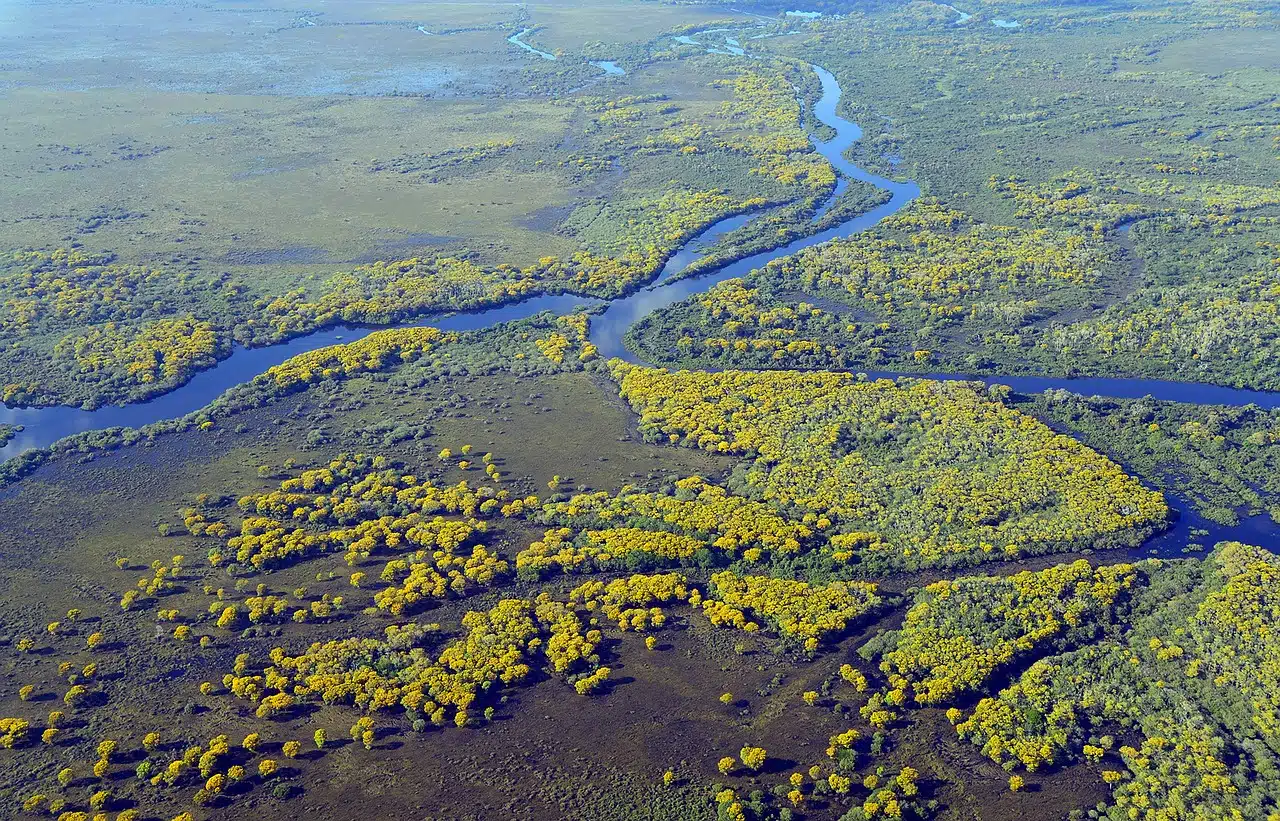
A swamp is a place where water is stored naturally, with a bottom that is usually muddy.
Pantano is a term that comes from the Italian language and whose origin could go back to the name Pantanus , which was a lake in ancient Italy . It is the deep place where the waters collect and stop naturally , with a generally muddy bottom .
For example: "Be careful: thousands of crocodiles live in this swamp" , "In the middle of the mountains, we found a swamp full of vegetation " , "Carlos fell into the swamp and came out all dirty" .
Characteristics of a swamp
The swamp is formed by stagnant waters that usually house very dense aquatic vegetation, despite its shallow depth. There are freshwater and saltwater swamps.
In some swamps, the water is not completely stagnant, but rather circulates through channels when very heavy rainfall occurs or during the thaw season. These phenomena promote the movement of sediments and the generation of mud.
It is possible to consider the swamp as an ecosystem , since various species of flora, animals, algae, etc. can coexist there. The Florida Everglades ( United States ); the Pantanal of Brazil , Bolivia and Paraguay ; and the Iberá estuaries in Argentina are some examples of known swamps.

The Pantanal, in South America, is one of the most important swamps in the world.
Some examples
Let's see some of the most beautiful swamps in the world:
- Great Dismal – United States: It is located on the border of Virginia and North Carolina and is one of the few large wilderness areas left in the east of the country. For centuries, the Dismal Swamp had been overexploited, but the creation of a refuge in 1974 was the beginning of a new era for this incredible work of nature. Among the animal species it houses are the wild cat, the otter and the black bear, nearly two hundred species of birds and more than seventy amphibians and reptiles, all of this without counting the great variety of plants and flowers that complete the cycle. of life .
- The Pantanal – Brazil, Bolivia and Paraguay: The Pantanal is among the largest wetlands in the world and its beauty is not far behind. A large percentage of its area belongs to Brazil, with considerably smaller parts in Paraguay and Bolivia; Its approximate dimensions range between 140 thousand and 195 thousand square kilometers and 80% is submerged throughout the rainy season. The species of plants, mammals, reptiles, birds, fish and invertebrates that inhabit its waters number several thousand.
- Tigris and Euphrates Swamp – Western Asia: The Tigris and Euphrates are two well-known rivers worldwide, which are connected to swamps, lakes and swamps. It is a considerable source of water surrounded by desert . As a regrettable fact, Saddam Hussein's regime in Iraq did everything possible to spoil its beautiful landscapes to achieve political control and defeat the inhabitants of the place, which resulted in the loss of more than five dozen species of water birds, fish and mammals.
- Candaba Swamp – Philippines: With an area of 32 thousand hectares, the Candaba Swamp is one of the most important bird sanctuaries, mainly migratory birds, and displays beauty in every corner. Its lands allow the cultivation of watermelons and rice between November and April; During the rest of the year, the water is not afraid to submerge them completely.
Symbolic use of the notion of swamp
It should be noted that, in a symbolic sense, the notion of swamp is used to name a difficulty or an obstacle , perhaps due to the fact that people remain stagnant like the waters of the swamp.
"The rival defense became a swamp for the Uruguayan attackers"y «We are in a swamp: the machine broke and we cannot get spare parts» son expresiones que sirven como ejemplo de esta acepción.
